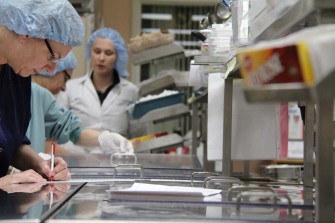The International Dietetics and Nutrition Terminology (IDNT) reference manual was implemented to provide standardized language for nutrition diagnoses. It was designed to support the development of nutrition templates within electronic...
All posts by Deanna Zidar
Layout, design, and service are all important factors in any foodservice operation, whether it is a restaurant or hospital. However, what is the glue that holds all of these factors...
Sustainability-meeting the needs of the present, while ensuring the needs of the future will also be met. Often we hear this notion with terms such as “going green” or “environmentally...
According to the calendar, spring has officially sprung! But if you’re like me and found yourself scraping the ice off your car this morning (yes, on March 28th!), you must...


